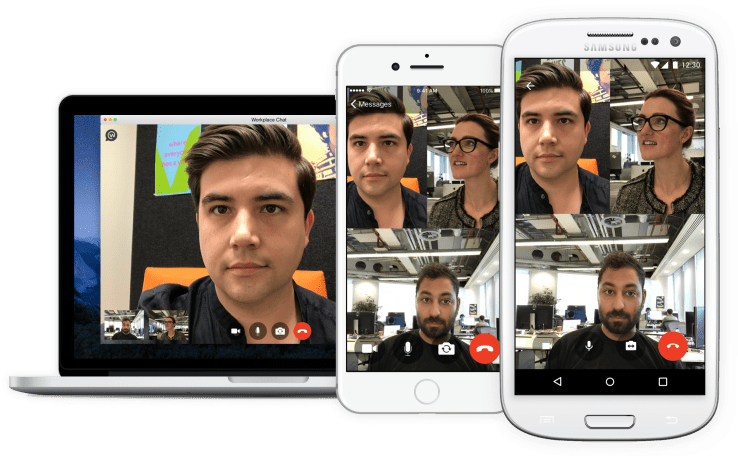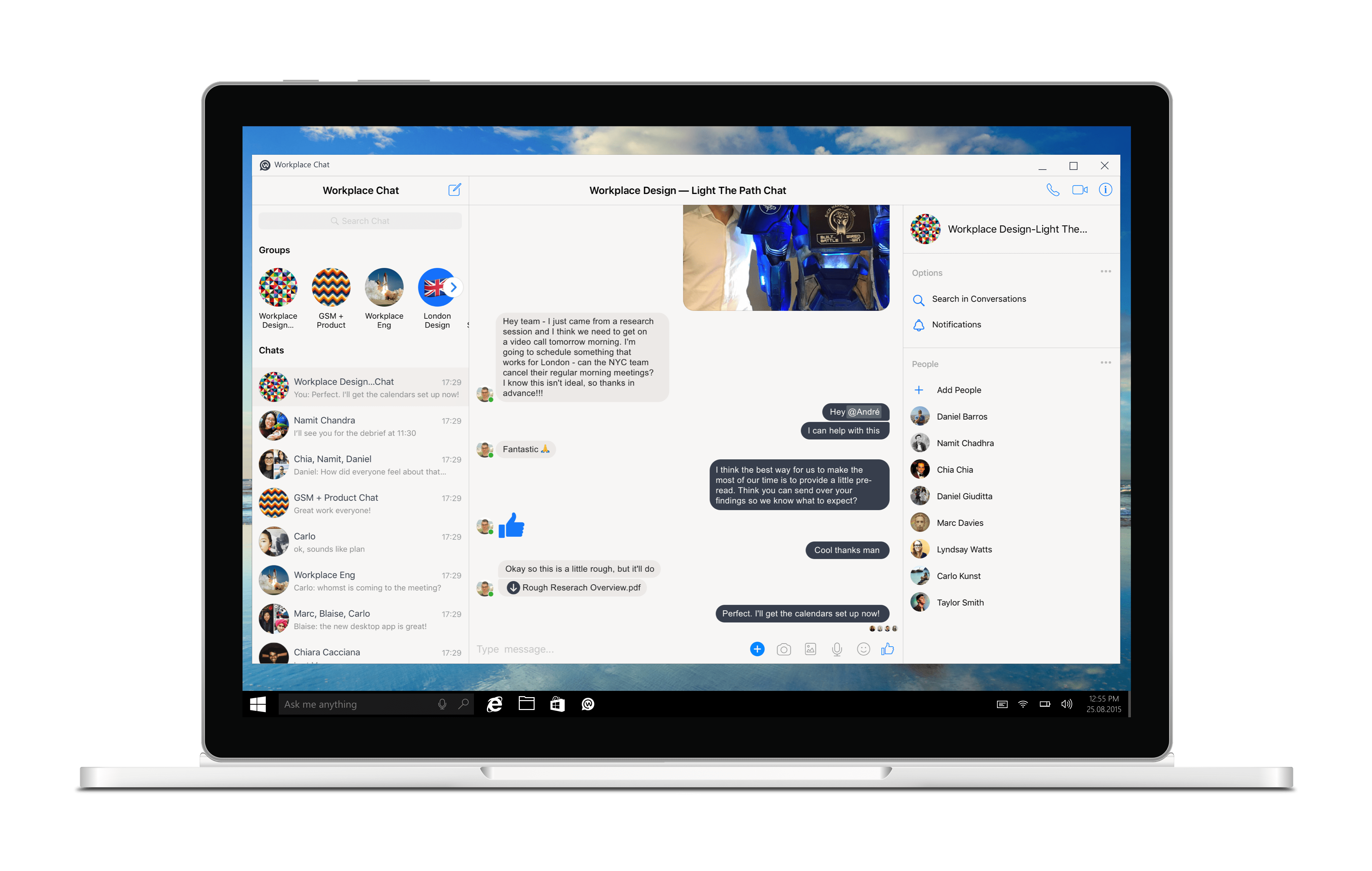
It’s been once year since Workplace, Facebook’s social network designed specifically for businesses and other organizations, came out of beta to take on the likes of Slack, Atlassian, Microsoft and others in the world of enterprise collaboration. Now, with 30,000 organizations using Workplace across some 1 million groups (more than double the figures Facebook published April), Facebook is stepping on the gas again.
Today, the company is releasing a desktop app for Workplace Chat, with new features like screen sharing and, in coming months, group video chat, which will let people create virtual “rooms” of up to 50 people for interactive video conferences. Previously, the video features in Workplace were limited to live video broadcasts and one-to-one video conversations.
Alongside the new apps and features, Facebook is also updating the overall design of Workplace to simplify the interface and make it consistent across Android, iOS, desktop and web:
Workplace has positioned itself as the collaboration platform for everyone in your organization — not just those who are so-called “knowledge workers” who are at desks most of the day. The idea is that everyone, from executive to barista to warehouse assistant, will find Workplace easy to use because, well, it looks and feels a lot like the hugely popular Facebook. However, the new desktop apps — for both PC and Mac — are a hat tip that there are, in fact, a lot of those desk-sitters using Workplace, too.
The two apps have been in beta for a little while, as spotted by my colleague Josh earlier this month. What was not known was Facebook’s plans to put Google Hangouts — as well as Meet, the enterprise version of Hangouts that Google launched in February — in its crosshairs by adding in group video conversations.
When Josh spotted the beta of the Chat desktop app with screen sharing, Facebook said the app was made in response to what users were most requesting.
But just as important, another key reason is engagement. By adding in more features like screen sharing, desktop apps and group video chat into a Workplace experience, people are more likely to stay in Facebook’s app rather than going elsewhere for those features.
(And there are many places to go — not least of which is Slack, which just yesterdayupdated its own screen sharing feature with the ability to edit on other people’s screens — which had been a big feature of Screenhero, the startup it acquired to build it. Other competitors on the video chat front, ironically, include Facebook Messenger, which added in group video conversations with up to 50 guests last December.)
Engagement on Workplace is key, since Facebook charges for Workplace not by seat — a typical pricing metric for enterprise services — but by monthly active user (based on number of users, and the features you want, the charged tiers range between $1 and $3 per MAU).
This not only aligns Workplace with its consumer service, but it also, in the words of Julien Codorniou, VP of Workplace, puts his company’s feet to the fire to make sure people actually use it.
“If you don’t use it, you don’t pay,” he said in an interview. “That shows the confidence we have and puts pressure on us to build a good product.” And before you wonder, there are still no plans to figure out how to, or even if, to offer a version of Workplace with advertising, which remains Facebook’s mainstay when it comes to revenues and the bottom line.
Workplace hit a major scaling milestone last month when it signed up Walmart, the world’s biggest employer with 2.2 million employees, as a customer. But while Facebook has made a lot of progress in terms of signing up new users, it’s been somewhat slower in terms of how it has built out the product overall.
One of the key defining characteristics of Slack, as a point of comparison, has been how the chat app (which has over 50,000 paying customers on its books) has positioned itself as a collaboration platform, by making it very easy to integrate many other apps, and bring in data from them, into your Slack conversations. Slack now has thousands of apps in its App Directory that can now be integrated into your own Slack experience.
Facebook, on the other hand, has not been as aggressive in building out that aspect of the Workplace platform, with the primary integrations being with some of the more popular services on the market today like Box, Microsoft, Dropbox and Quip/Salesforce.
But my guess is that this is not near the end of where Facebook plans to go. Its sights are set not just on helping people communicate what they are working on to each other, but to actually help them get that work done.
“We want to build Workplace like we built Facebook,” Codorniou said. “We [first] put everyone on the same network and connect them… when that happens, it goes from communication to automation.” Some of this, it seems, may already be happening on Workplace in smaller cases. Food delivery company Deliveroo has been using the platform to help check in visitors using Envoy, and when someone signs in, the person they are coming in to see gets an automatic ping.
Longer term, that could also see Facebook not just taking on significantly more integrations — and working with those who can enable them (as of April of this year, there are now more than 50 partners helping on that front); but also, tapping more into its efforts one with bots and AI to take on some an employee’s workload.
[“Source-techcrunch”]















